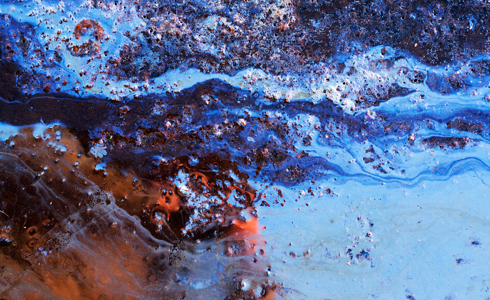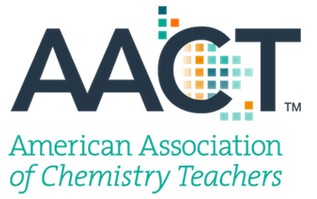Grade Level
6 - 8
minutes
15 min - 1 hr
subject
Chemistry
Activity Type:
separating mixtures, observations, Simulation
Do you want to try cleaning up an oil spill yourself? This experiment will help you understand why it is such a difficult task. All of the tools you will need are environmentally friendly and easy to find.
Objectives
By the end of this lesson, students should be able to:
- determine which sorbents best absorb oil from fresh and salt water.
- make careful observations.
- draw conclusions based on their observations.
Safety Notes
- Always wear safety goggles when working with chemicals in a lab setting.
- Students should wash their hands thoroughly before leaving the lab.
- When students complete the lab, instruct them how to clean up their materials and dispose of any chemicals.
Materials
- one 28-cm x 19-cm x 4-cm clear glass baking dish (or equivalent)
- water
- blue food coloring
- 12 Tbsp vegetable oil
- 8 Tbsp pure cocoa powder
- sea salt (only use table salt if sea salt is not available)
- a tablespoon
- a teaspoon
- 5 wooden stirring rods
- a coffee mug
- sorbents (paper towel, cotton balls, rag, string, nylon pot scrubber, sponge, Styrofoam cup, garden peat moss)
- 1 squirt of liquid dishwashing detergent
- tweezers or tongs
- bird feathers (available at some hobby stores)
- 5 petri dishes
- dropper
- fine-, medium-, and coarse-grained sand
- potting soil
- printed student data sheet
- Student activity guide from AACT
Procedure
- Fill baking dish with cold tap water within one cm of rim.
- Add five-six drops of food dye.
- Mix dye and water with a stirring rod. Let solution settle.
- Record your observations in Table 1 on the student data sheet.
- Fill baking dish with cold water within 1 cm of rim.
- Add 8 teaspoons of salt slowly and stir until dissolved.
(If you have a hygrometer, keep adding salt until you reach a salinity of 1.024 – 1.026.) - Add five to six drops of food dye.
- Mix dye and “ocean water” with a stirring rod.
- Record your observations in Table 1 on the student data sheet.
- Place 3 Tbsp. of vegetable oil in mug.
- Add 2 Tbsp. of cocoa powder.
- Mix cocoa powder and oil thoroughly with a paddle pop stick.
- Very slowly pour simulated crude oil from a height of 1 cm onto the top of the fresh water dish. If you pour the oil too quickly, the experiment won’t work.
- What happened to the oil when you dropped it on the fresh water? Did it sink? Float? Mix in?
- Wait 3 minutes. Record your observations in Table 1 on the student data sheet.
- Repeat steps 1-3 with ocean water.
- Place a small sorbent sample into the center top of the contaminated fresh water.
- Record your observations in Table 1. Include all of the following information:
a. How much oil did the sorbent clean up? How quickly?
b. Does the sorbent pick up water too? If so, how can you tell?
c. Does the sorbent sink or float?
d. What is the condition of the contaminated sorbent? - Remove sorbent with tweezers or tongs.
- Repeat step one with other sorbent samples, recording your observations in Table 1 on the student data sheet.
- Clean out contaminated fresh water.
- Prepare new contaminated fresh water following the same procedure as before.
- Add detergent to the oil-contaminated fresh water.
- What happened when the detergent was added to the contaminated water?
- Where would the oil go in “real” fresh water after a dispersant (like the dishwashing detergent) is used?
- How clean is the fresh water now that it has dishwashing liquid in it?
- Repeat steps 1-7 with ocean water and compare the results with those for fresh water.
- Dip feather into oil-contaminated fresh water.
a. What happens when a feather gets oil on it?
b. How might an oiled feather affect a bird? - Repeat the steps above, substituting ocean water for the fresh water.
- Use five plastic petri dishes.
- Fill one petri dish with fine-grained sand.
- Fill one petri dish with medium-grained sand.
- Fill one petri dish with coarse-grained sand.
- Fill one petri dish with “mud” created by adding enough water to potting soil to create a paste.
- Fill one petri dish with dry potting soil.
- Place three droppers full of oil onto each the petri dishes.
- Record observations each time the oil is added to the different soil substrates in Table 2 on the student data sheet.
Analysis
Based on your observations recorded above, answer the following questions.
- How is fresh water/ocean different from tap water?
- How would you pick up the oil-contaminated material in a “real” oil spill in fresh water/the ocean?
- How would you dispose of the oil-contaminated material in a real oil spill?
- Of the sorbents you tested, which one worked the fastest? The best?
- What other materials could you use as sorbents?
- Are the results of the experiment different when you use fresh water instead of an ocean?
- Which soil absorbs the most oil?
- Which soil repels the most oil?
- Which soil would be the easiest to clean?
- Which soil would be the hardest to clean?
The American Association of Chemistry Teachers (AACT) offers K–12 teachers of chemistry teaching resources, professional development opportunities, a periodical about teaching chemistry, and more. Through its website, AACT provides a place for teachers of chemistry to share, connect, and succeed. Click here for more information and to become a member.
This resource was submitted to AACT by Tiska Rodgers of Dexter High School in Dexter, Missouri. See the Teacher and Student Guides for this activity from AACT.
Featured image of Oil Slick Close Up from Shutterstock.
Meet the Writer
About AACT
The American Association of Chemistry Teachers offers K–12 teachers of chemistry teaching resources, professional development opportunities, a periodical about teaching chemistry, and more.

